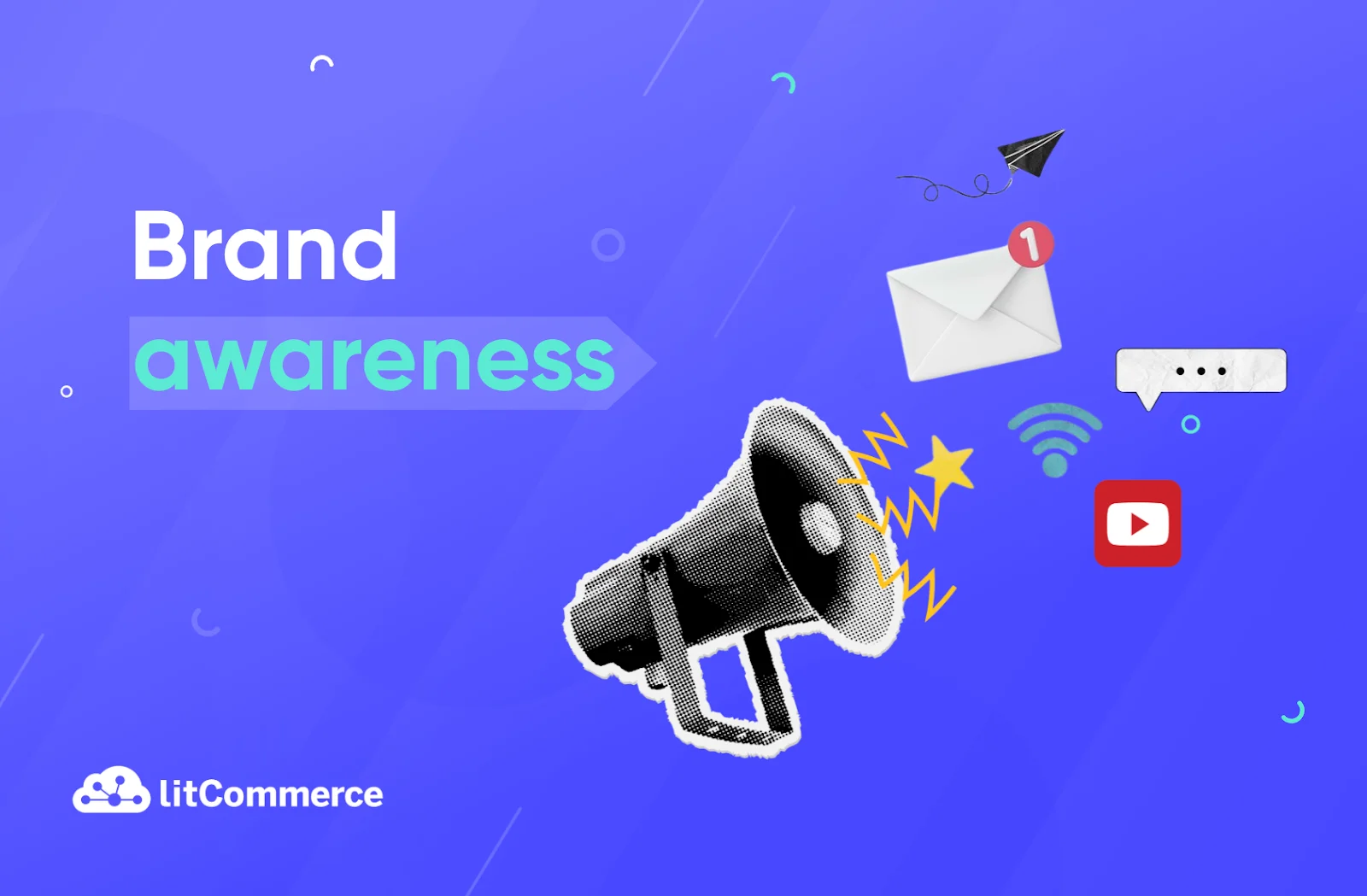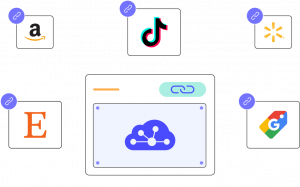Have you ever noticed how some brands pop into your head instantly, while others barely register? That’s the power of brand awareness at work, quiet, invisible, but incredibly influential in shaping buying decisions.
Let’s discover the full guide to brand awareness, including definitions, examples, and how to build and increase brand awareness.
Key takeaways
What Is Brand Awareness?
Brand awareness is the level of customer familiarity with a product or service’s name, and can affect consumer perceptions and purchasing decisions.
It represents the initial stage of a consumer’s interest in a product or service and the first stage of the marketing funnel, where potential customers discover your brand and start recognizing it.
A strong brand awareness means the brand is well-known and easily recognizable to its target audience, often leading to increased customer preference and loyalty.
While brand awareness helps your business get noticed, personal branding builds trust and credibility around you as an individual. To discover more, read this personal branding guide.
Brand awareness vs brand recognition vs brand reputation comparison
Brand awareness vs brand recognition vs brand reputation comparison
When talking about branding, people often confuse brand awareness, brand recognition, and brand reputation, but they’re not the same.
Here is a comparison of these 3 definitions based on key distinctions:
Aspect | Brand Recognition | Brand Awareness | Brand Reputation |
Definition | Ability of consumers to identify a brand from visual or auditory cues (logo, colors, packaging, sound). | Level of familiarity with a brand and its offerings, even without visual cues. | Overall perception of a company's image as seen through the eyes of its customers, stakeholders, and the public. |
Key elements | Logos, colors, slogans, jingles, packaging. | Visibility, recall, brand values, emotional connections, and general understanding of what the brand stands for. | Trust, credibility, product quality, customer satisfaction, and emotional connection. |
Consumer impact | Helps consumers quickly identify and differentiate a brand from competitors. | Drives consideration, recognition, and initial interest. | Influences buying decisions, loyalty, advocacy, and long-term customer relationships. |
Measurement | Recognition tests using visuals or sounds. | Recall tests, awareness surveys, social reach, and traffic. | Reviews, ratings, NPS, sentiment analysis, and reputation scores. |
Marketing focus | Consistent visual branding across all touchpoints. | Storytelling, messaging, exposure, multi-channel campaigns. | Customer experience, PR, crisis management, reviews, trust-building initiatives. |
Time to build | Can be built relatively quickly with repeated exposure. | Takes longer as it requires emotional and cognitive association. | Takes continuous, positive experiences and consistency over time. |
Examples | Instantly recognizing Coca-Cola from its logo or bottle shape. | Knowing Coca-Cola’s heritage, values, and product range. | Coca-Cola being trusted for quality and consistent customer satisfaction. |
Key takeaways:
Why Does Brand Awareness Matter for Selling Online?

Brand awareness matters for selling online because it plays a crucial role in distinguishing a brand from the competition. But beyond simple recognition, building positive brand awareness brings important advantages, including:
- Building trust and credibility: Brand awareness builds trust and credibility, as online shoppers are more likely to trust products and services from brands they recognize. 81% of consumers need to trust a brand to consider buying.
- Differentiation in a crowded market: Brand awareness helps a business stand out by creating a unique and memorable identity that attracts customers and sets it apart from competitors.
- Customer loyalty and repeat business: Brand awareness drives customer loyalty and repeat business, as people are more likely to buy from brands they recognize and trust, and to recommend them to others.
- Enhanced marketing effectiveness: Brand awareness enhances marketing effectiveness, making campaigns more impactful since familiar brands tend to earn higher engagement, stronger conversions, and a better return on investment.
- Driving sales growth: Awareness brings the brand to the top of consumers ‘ minds, increasing the likelihood that consumers will select the brand when making online purchasing decisions. According to SproutSocial, 77% of consumers prefer shopping with brands they follow on social media.
- Building a strong online presence: Brand awareness is closely tied to online visibility across social media, search engines, and review platforms, ensuring potential customers can discover and remember the brand through multiple digital touchpoints.
In essence, brand awareness is foundational for online selling success because it builds recognition, trust, and preference, all of which are critical in converting browsers into buyers in a competitive market.
How to Build Brand Awareness for Brand
Now that you understand the benefits of brand awareness, let’s explore the key steps to building it, so that when people think of your industry, your brand is the first that comes to mind.
Define your brand identity
The foundation of brand awareness is a clear and consistent brand identity. This includes your brand’s mission, values, voice, and visual elements like logos, colors, and typography.
You can ask yourself: What makes your brand unique? What story do you want to tell? A strong brand identity helps you stand out and creates a memorable impression.
- Mission is its purpose and what it strives to achieve. For example, the mission of Etsy is “Our mission is to Keep Commerce Human.
- Brand voice is the personality and tone you use in all communications. For instance, “Our brand voice is approachable, innovative, and supportive, using clear and friendly language to connect with entrepreneurs and inspire confidence.
- Visual identity is the design elements that represent your brand. For example, “Our visual identity features a modern, minimalist logo with a green and white color palette to reflect sustainability and trust, paired with clean sans-serif typography for accessibility.”
When these elements are unified across all channels, they make your brand instantly recognizable and memorable. A strong brand identity creates trust and sets the foundation for all marketing efforts, helping the audience relate to your brand’s values and personality.
Create valuable and shareable content
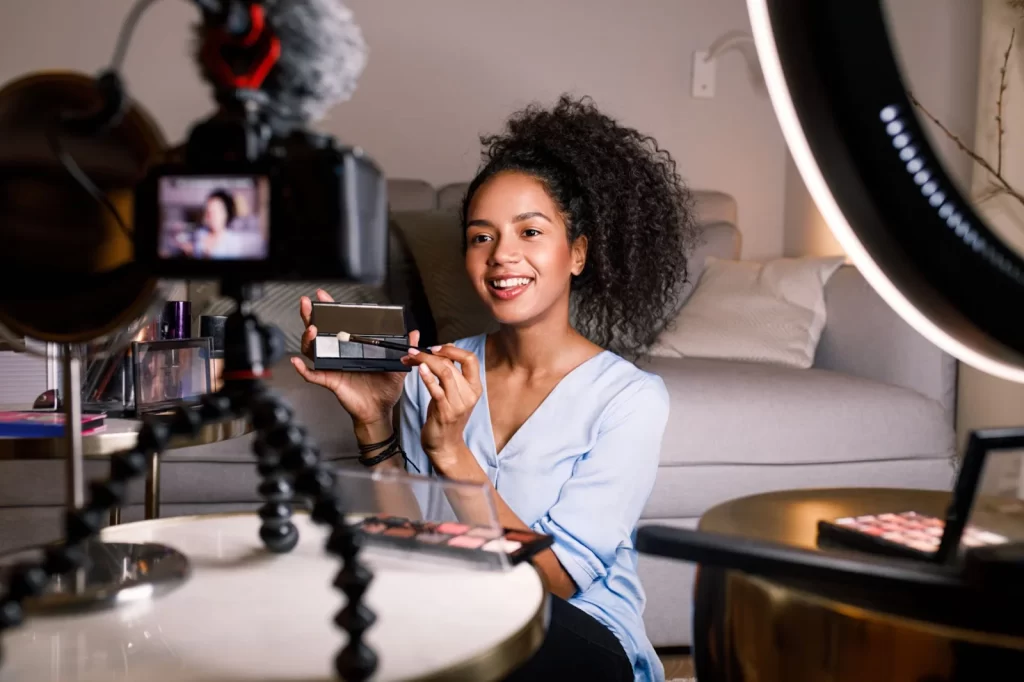
Once you’ve established your identity, the next step is to share it with the world through content. Content is one of the most effective ways to reach new audiences and invite them to engage with your brand.
By publishing blog posts, infographics, videos, or other creative formats that inform, entertain, or inspire, you give people a reason to connect with you and spread your message.
You can also encourage user-generated content (UGC) by running challenges, contests, or interactive campaigns, which amplify your visibility through your customers’ voices. A report shows that 93% of marketers say user-generated content outperforms traditional branded content.
Storytelling is especially powerful here, as it humanizes your brand and builds emotional connections with your audience.
Using the digital platforms
Of course, even the best content won’t have an impact if it’s not delivered on the right channels. That’s why one of the most effective steps in how to build brand awareness is focusing on the digital platforms where your audience already spends their time.
Instead of trying to be everywhere, it’s far more effective to double down on two or three platforms that matter most. For example, B2B brands may find LinkedIn and YouTube more rewarding, while fashion and lifestyle brands thrive on Instagram, Pinterest, or TikTok, or other social commerce channels where customers can discover and shop directly.
Tailoring your content to fit the strengths of each platform, whether that’s short videos, long-form guides, or visual storytelling, ensures your message reaches the right people in the right way.
By putting your efforts into the right platforms, you maximize visibility and build awareness with the people who matter most.
Focus on repetition and consistency
Once you know where to show up, the key is to show up consistently. Brand awareness doesn’t happen overnight. It’s built through repetition and a unified experience over time.
By sticking to a content calendar, maintaining a consistent tone of voice, and reinforcing your core message across every touchpoint, you create familiarity that turns recognition into trust.
Nike’s iconic “Just Do It” is the perfect example of how repeated messaging, paired with consistent visuals and values, can become unforgettable.
One thing to note is that building brand awareness is not a one-time campaign, but rather a long-term commitment. By staying consistent, you’ll strengthen trust and connection with your audience. Over time, your brand won’t just be known, it will be remembered.
Build thought leadership

Finally, true brand awareness goes beyond recognition, it evolves into authority. This is where building thought leadership comes in.
Start with sharing original research, publishing expert insights, speaking at events, or collaborating with industry leaders, and you position your brand as a trusted voice in your field.
Consistently contributing valuable knowledge not only showcases your expertise but also builds credibility and influence within your industry. Over time, this authority helps you stand out from competitors, attract loyal followers, and strengthen long-term brand awareness.
When your audience not only recognizes your name but also looks to you for guidance, your brand becomes more than familiar. It becomes respected.
Companies like HubSpot have done this successfully by consistently offering free resources and educational content, cementing themselves as leaders in inbound marketing.
5 Best Ways to Increase Brand Awareness for SMBs
Increasing brand awareness is about making more people know about your brand, recognize it, and remember it when they see your products or services. Here are five effective strategies for SMBs:
Do advertising
Advertising helps increase brand awareness by putting your brand in front of the right people at the right time. When potential customers repeatedly see your message, whether on social media, search engines, TV, or other channels.
They become more familiar with your name, visuals, and products. This repeated exposure makes it easier for them to recognize your brand and remember it when they’re ready to buy.
To get the most out of your advertising efforts, use engaging formats like video or interactive media to capture attention and create stronger emotional connections. Moreover, keeping your message consistent across all channels helps reinforce brand recognition and build familiarity over time.
Develop a strong content strategy
If you want more people to know and remember your brand, you need a strong content strategy. Think of it as your roadmap; it tells you what to create, who you’re creating for, and how it helps you stand out.
First, get clear on your goals: do you want more reach, traffic, or social buzz? Once you know, dive into understanding your audience. Who are they, what do they struggle with, and where do they spend time online? The more you know, the easier it is to create content they’ll actually care about.
From there, define your brand voice and key messages so your content always feels consistent and recognizable. Then, focus on content formats that people love to share, such as blogs, videos, infographics, or even influencer collaborations.
Smooth Ads Running with LitCommerce!
LitCommerce creates product feeds for advertising on Facebook, Google Shopping, and over 350 channels seamlessly, ensuring they meet ad requirements with smart checks, and keeps them updated automatically through feed syncs.
Partner with other brands and influencers

The second way for the question “how to increase brand awareness” is to partner with other brands or influencers. By doing it this way, you’re putting your brand in front of their followers, instantly amplifying your visibility. According to Sprout Social, 86% of consumers make a purchase inspired by an influencer at least once per year.
You should scout for brands or micro-influencers whose followers match your target crowd by trying to search Instagram or LinkedIn to find them. After finding, reach out with a bold pitch for something like a co-branded giveaway or shoutout that gets your name noticed.
Don’t forget to lock in a clear contract so everyone knows the plan, ensuring your brand shines. After the collab, keep those partnerships going to make sure your brand stays in the spotlight.
Participate in the event
You know how powerful it is to meet people face-to-face. Events let you do that, making your brand stick in attendees’ minds. 77% of marketers say events are the most effective marketing channel for their company.
To do that, pick events where your audience hangs out, like industry expos or community festivals, and make sure your booth screams your brand with bold visuals. Get people excited with demos or free samples that highlight what you do.
Next, promote your attendance on social media to pull in more visitors. Finally, collect contacts with a quick signup system, then follow up fast with branded emails to keep your name fresh.
Become a sponsor
Sponsoring events or causes puts your name in front of targeted crowds, boosting awareness without huge ad costs. Local sponsorships, in particular, make your SMB a community hero, and studies show these brands get stronger recall and loyalty from customers.
You can look for sponsorships that vibe with your brand, like local charity events or niche webinars, and negotiate to get your logo on banners or websites. Offer branded goodies or discounts to attendees to make your name stick.
Then, share your sponsorship on your social channels with fun posts to reach even more people.
If increasing brand loyalty is your goal, this guide is a must-read: Customer Experience Marketing: 6 Strategies for Brand Loyalty.
Encourage User-Generated Content (UGC)
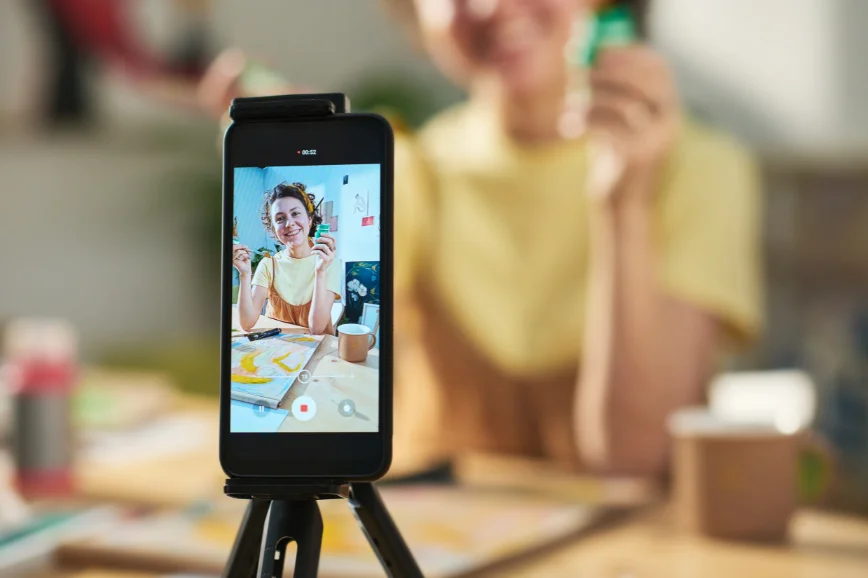
Finally, one of the most powerful yet cost-effective ways to increase brand awareness is by turning your customers into your advocates.
When people share photos, reviews, or stories about your product, it builds trust and spreads your name faster than ads. You can encourage UGC by running hashtag campaigns, creating contests, or simply asking customers to tag you when they use your product.
For small businesses, this is a golden opportunity because it’s free marketing driven by real people. The more your community talks about you, the more others will recognize and remember your brand.
How to Measure Brand Awareness Effectively
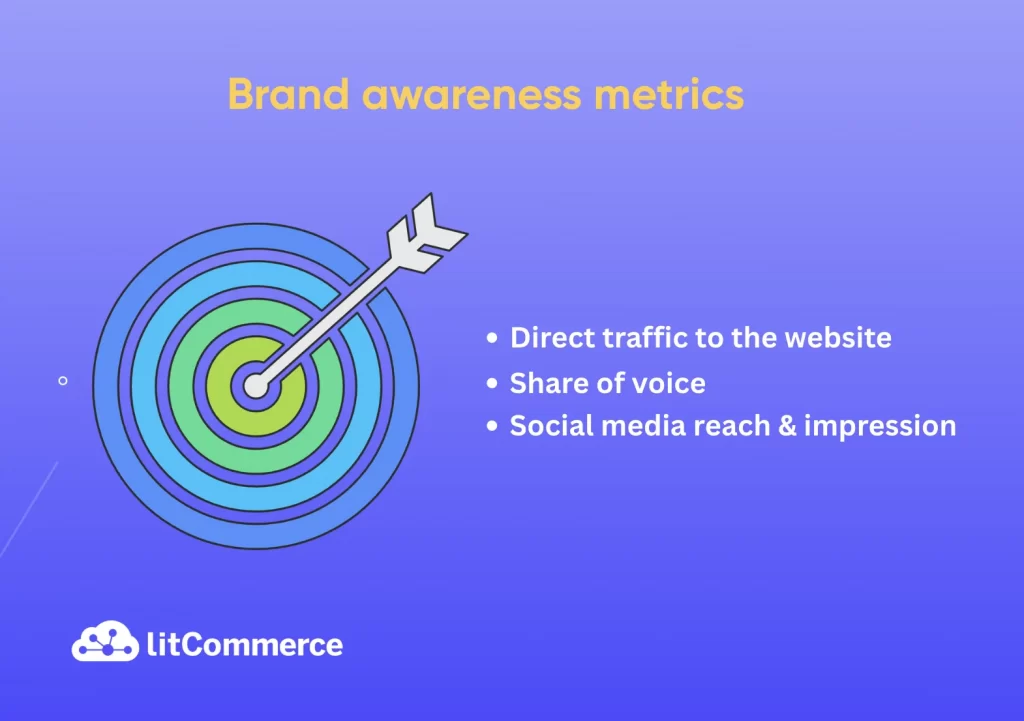
Understanding and tracking brand awareness isn’t just about reporting vanity metrics to your execs. It’s about making smarter marketing decisions.
Here are the brand awareness metrics and how to track your brand awareness:
Direct traffic
Direct traffic is the number of visitors who arrive at your website by directly typing your URL or through bookmarks, indicating brand recognition without relying on external sources like search engines or ads.
This traffic is essential to measure because it shows how many users remember a brand and visit its website directly, without needing a search engine or another referral.
This type of traffic is a proxy for brand recall, and an increase in its volume often indicates that marketing efforts are successfully embedding the brand in consumers’ minds. It also shows that customers know and trust your brand enough to seek it out intentionally, reflecting strong awareness.
Backlinks
Backlinks are a key indicator when measuring brand awareness. Each link from another website signals that your brand is recognized and trusted by others, reflecting its visibility and credibility online.
Tracking the quantity and quality of backlinks helps you understand how widely your brand is referenced, while also showing which audiences and industries are engaging with your content.
Additionally, high-quality backlinks from reputable sources not only enhance SEO but also provide insights into your brand’s reach, helping you measure awareness and identify opportunities to expand your presence.
Social media reach and impression
The next key to measuring brand awareness is social media reach. This metric shows how many unique users come across your content on platforms like Instagram, TikTok, or Twitter/X.
Unlike engagement, reach shows how far your brand extends to new audiences, helping prioritize high-visibility channels.
If your reach is low, it’s a sign you may need more paid ads or viral-style content to get noticed. If your reach is high, focus on creating content that converts those viewers into customers.
You can track this with tools like Instagram Insights or X (Twitter) Analytics by checking reach or impressions and filtering for unique users.
Share of voice
One more key metric to track your brand awareness is share of Voice (SOV). This metric calculates your brand’s percentage of online conversations or mentions compared to competitors in your industry, showing how much your brand dominates category discussions.
The formula for Share of voice = (Your brand metrics / Total market metrics).
The specific “metrics” can be mentions, ad impressions, search traffic, or ad spend, depending on the channel you are measuring.
A strong Share of Voice (SOV) shows that your brand is more visible than competitors, giving you an edge in awareness and positioning. On the other hand, a low SOV suggests you may need to boost PR, social campaigns, or paid ads to catch up.
Brand awareness survey
Surveys are one of the most direct ways to measure how familiar your audience is with your brand. By reaching out to existing customers or your target market, you can collect insights about how well your brand is recognized and perceived.
You can use tools like Google Forms, Typeform, or SurveyMonkey to create online surveys. Then, send the survey to your existing customers, email list, or target audience via social media ads. Finally, track the trend over time to measure your brand awareness.
Open-ended questions
The next method is using open-ended questions. This allows respondents to answer in their own words and provides deeper insights into how customers describe your brand, what comes to mind first, and the associations they make with your products or services.
After getting the insight, use text analysis or thematic coding to identify common words, themes, and associations. These insights help you understand how your brand is perceived and uncover messaging opportunities
Multiple-choice questions
Different from open-ended questions, multiple-choice questions make it easier to quantify brand awareness.
You can ask respondents to select from options such as “Which of the following brands are you familiar with?” or “Which brands have you heard of in the last month?” This method helps you track recognition rates and compare your brand’s visibility against competitors.
Brand Awareness Explained: FAQs
What do you mean by brand awareness?
Brand awareness is the level of customer familiarity with a product or service’s name. It represents the initial stage of a consumer’s interest in a product or service. Strong brand awareness means the brand is well-known and easily recognizable to its target audience, often leading to increased customer preference and loyalty.
How do you create brand awareness?
To create brand awareness, start by defining your brand identity, creating valuable content, consistently promoting a unique brand identity across multiple platforms, and focusing on repetition.
What is considered good brand awareness?
Good brand awareness varies by industry and competition, but generally means a high percentage of target consumers can recognize or recall the brand unaided (without prompts) or aided (with cues).
Brands that are “top of mind” in their category, meaning they are the first brands people think of when considering a product category, are considered to have excellent brand awareness.
How to see brand awareness?
To see or measure brand awareness, marketers use various methods and metrics, including direct traffic to the website, social media reach & impressions, share of voice, and brand recall tests.
Final Words
Building brand awareness isn’t just about being seen; it’s about being remembered and trusted. This post walks you through brand awareness definition, proven strategies to build it, the best ways to increase it, and key metrics to measure success.
With these insights, you’ll gain a clear understanding of brand awareness and be better equipped to build a brand that not only stands out but also stays top of mind for your audience.
If you still need more marketing tips or expert guidance? Visit our Blog or Contact us for further assistance. We’re here to help!

